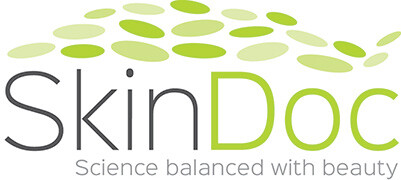Vitiligo is a relatively common acquired loss of pigmentation of the skin affecting 1 to 2% of the population.

What is vitiligo?
Destruction of melanocytes or pigment cells occurs and the skin becomes white. The most common sites of pigment loss are the body folds such as the groin or armpits, around body openings and exposed areas like the face or hands. It can also develop at sites of injury such as cuts or scrapes and burns.
Vitiligo can begin any age but in half of all affected people it has its onset usually before the age of 20. It can be associated with a number of autoimmune conditions including thyroid disease and diabetes. Most people with vitiligo are in good health. The precise cause of vitiligo is unknown however genetic factors as well as trauma to the skin can lead to vitiligo. Vitiligo is not infectious and cannot spread to other people.
What is vitiligo look like?
White areas are present with well defined edges. They can be localised or generalised and can be distributed in a symmetrical distribution. White hairs can occur in the area of vitiligo and early greying or whitening of the scalp hairs, eyelashes, eyebrows and beard hair can occur.
Can vitiligo spread?
Vitiligo can remain localised and stable indefinitely or it may progress slowly or rapidly. There were no clinical predictive factors that will indicate whether the condition will spread. Factors that have been suggested that may precipitate further progression of vitiligo include emotional distress, physical illness, severe sunburn and pregnancy. Depigmented areas may sometimes spontaneously be re-pigmented.
The emotional impact of vitiligo
The cosmetic disfigurement particularly in dark skin individuals can be led to profound psychological effects. Low self-esteem, depression and job discrimination have been reported. Vitiligo can ultimately alter lifestyle choices such as selection of clothing, create social barriers and limit employment opportunities. Therefore treatment of vitiligo is important to these individuals.
Can my children inherited vitiligo?
There appears to be a hereditary component to vitiligo. About 10% of people will have a family history. Children of patients with vitiligo have a higher probability of developing vitiligo than children from families with no history of this condition. However it does not mean that patient’s children would definitely inherit vitiligo. In most cases of vitiligo there is no family history.
Can vitiligo be treated?
A dermatologist is the most experience person to assess and manage vitiligo.
Therefore main treatment options:
- No treatment
This is a good option if they are in a limited area of involvement and the patient has fair skin. Strict sun protection is important with SPF 50 sunscreen, sun protective clothing and sun avoidance. There is a risk of sunburn in areas of vitiligo. - Camouflage
This can be achieved with make-ups and topical dyes including self tanning lotions. Micro tattooing can be useful for small areas of vitiligo such as the face, lips and hands.
- Active re-pigmentation
Medical
New pigment cells must be produced from existing ones. The pigment cells come from the base of the hair follicles and from the edge of the area of vitiligo and migrate into the areas of vitiligo. Treatments include
*Corticosteroid creams
*Photo sensitising medication which is applied to the affected area followed by phototherapy (light therapy) such as narrow band UVB
*Other topical agents which include calcipotriol, tacrolimus, pimecrolimus
Approximate 75% of patients who undergo light therapy respond to a variable extent. Some individuals experience complete re-pigmentation.
Surgical
Surgical treatment should only be considered when medical therapies fail. They should only be considered in patients with stable and non-progressive vitiligo ideally localised or segmental in location. These procedures are often combined with medical therapies.
A number of surgical procedures for re-pigmentation of vitiligo have been developed. This includes transfer of the patient’s own melanocytes from unaffected skin into the areas of vitiligo. Techniques available include many grafting using punch grafts, not cultured epidermal suspension, cultured epidermal suspension and suction blister grafting. These treatments are relatively experimental and not done routinely.
Lasers
Laser such as the 308 nm xenon chloride excimer laser have been used to treat vitiligo with varying degrees of success. However these lasers are not widely available.
Depigmentation
Treatment with a depigmenting agent can be used in patients with widespread vitiligo with more than 80% of the surface area involved. This process may take up to 6 months to 2 years to achieve final complete depigmentation. Strict sun protection is required after depigmentation.
For further information on vitiligo please see your dermatologist.
